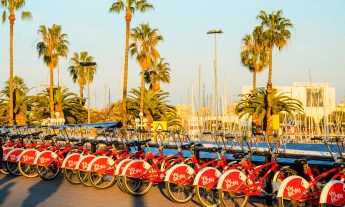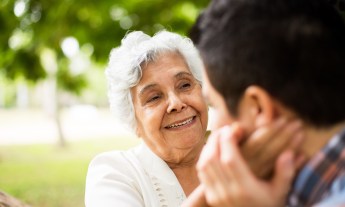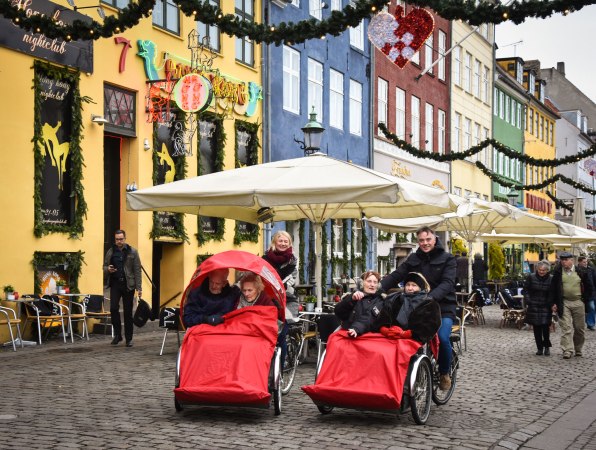
Copenhagener Ole Kassow launched a program to bring older Danes on bicycle outings. Now volunteer pilots in 29 countries are taking their passengers on the road.
It all started with a friendly wave. In 2012, Copenhagen native Ole Kassow’s daily cycling commute took him past a nursing home. Every morning, the management consultant would see impeccably dressed 97-year-old Thorkild, who’d greet him from a spot on a bench, a walker by his side. Kassow wondered about the last time the man — and the home’s other residents — had been on a bike. “Because most Copenhageners love cycling, I assumed he’d love to go back out in his community, to interact with his neighbors, and do something he’d probably always done in his life,” he says. He received permission from home staff to take a senior for a ride in a rental trishaw — a cargo tricycle with a low passenger compartment that goes in front of the cyclist. This ride eventually led Kassow to create the nonprofit Cycling Without Age, an initiative that now includes more than 250 chapters in 29 countries (TEDxCopenhagenSalon Talk: Cycling without age).
Initial rides led to stories and smiles. After Kassow took one of the nursing home residents out on a trishaw, he received a phone call the next day asking if he’d do it again. Trips with nursing home residents quickly became part of his life — and something he looked forward to. “It gave them a newfound mobility, and it gave me an amazing new insight into my city,” he says. On one ride, Thorkild pointed to a set of old army barracks by Rosenborg Castle and shouted to Kassow, “I used to live there.” It turned out that Thorkild had been a royal guard in 1938.
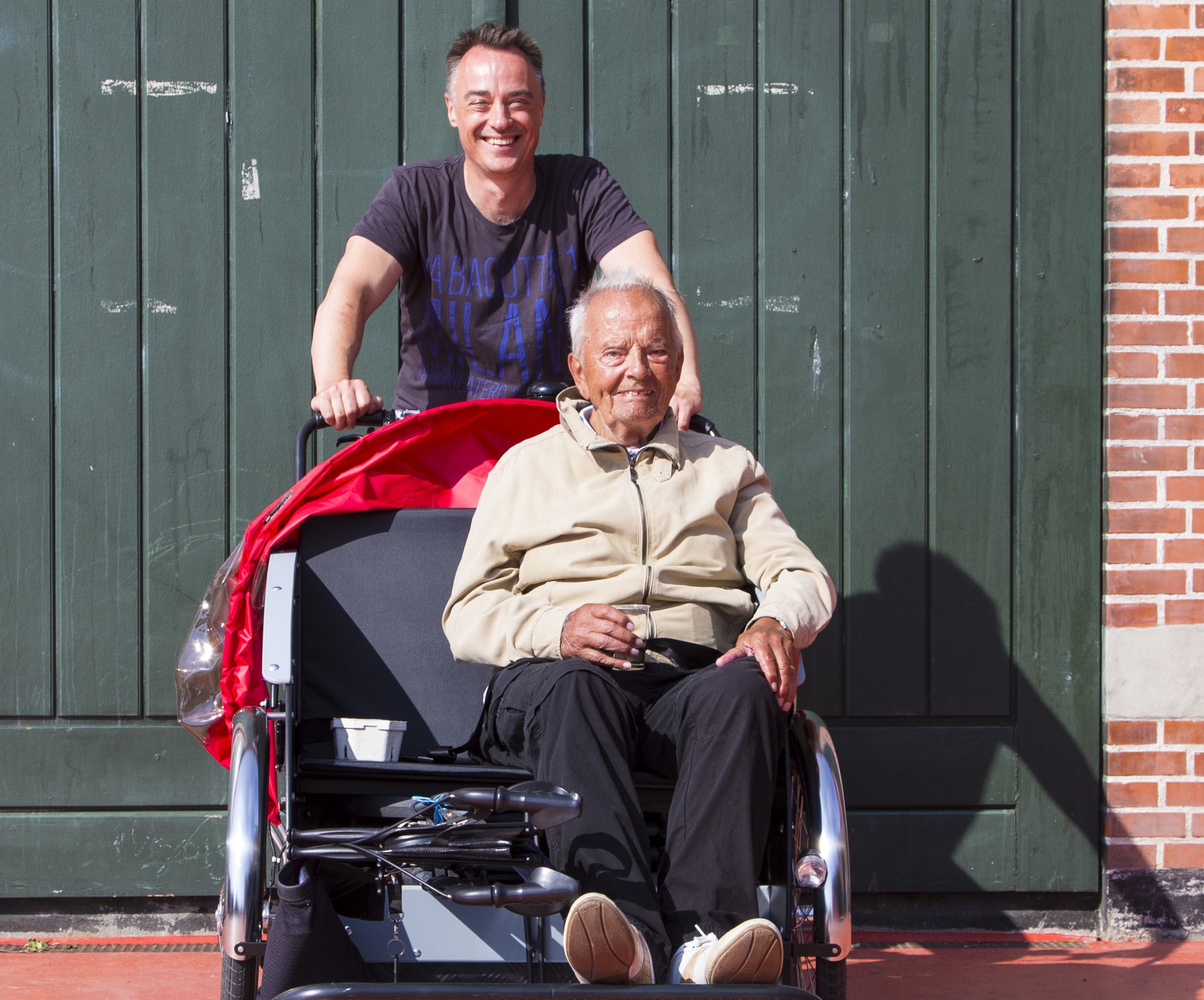
The seniors returned from the trishaw rides happy, talkative and sociable — shaken out of their everyday routines, the staff told Kassow. Inspired, he wrote to city officials, asking them to fund a trishaw for the nursing home. The city offered more: five trishaws for five nursing homes. Kassow was so thrilled that he organized a mini-parade with friends and family to show off the fleet. “All of a sudden, we had 30 volunteers signing up [to pilot the bikes],” he said. By October 2013, Kassow received his first request from outside Denmark — Oslo, Norway — to start a Cycling Without Age chapter.
The goal of Kassow and his team: to break down the barriers to mobility and activity that so many senior citizens face. A chapter in New Brunswick, Canada, takes seniors on nature rides near the Appalachian Mountains; in Oshkosh, Wisconsin, the police and fire department serve as cyclists; in Iceland, the trishaws are equipped with spiked tires for navigating icy surfaces. And in Denmark alone, there are now nearly 4,000 volunteer “pilots.”
Turning strangers into friends — and bringing families closer together. Pernille Bussone, 37, who launched the Singapore chapter two years ago, has become close friends with 87-year-old Annie, one of her regular passengers. Since the chapter’s start, the pair have met up at least once a week, to ride, talk and share stories. “With the trishaw, almost all areas are accessible,” Busson says. “Unlike with a wheelchair, we can go far.” The two women’s friendship goes beyond the bike. “Annie has taught me to cook Peranakan food [cuisine of the early Chinese migrants], to play mahjong, and to to keep my house clean and ant-free,” adds Busson (Annie’s anti-ant trick: lemons).
Sesselja Traustadóttir, head of the Icelandic chapter, brought Cycling Without Age to Iceland in 2015 after taking her elderly mother on a bike ride. Traustadóttir says the experience was transformational for them both, but especially for her mom, who’d been discouraged by health complications that left her unable to hike and ski. Traustadóttir takes other senior passengers for rides and has also continued outings with her mom. “We are spending hours outdoors, singing and smiling,” she says. “The Cycling Without Age bikes have opened up a new world for us.” In Canada, Shelley Shillington, head of a nursing home in St. John, New Brunswick, says the program has helped a resident grow closer with her granddaughter. “She can no longer do things other grandparents may do, but she can do this and it has continued to bring them closer,” says Shillington. “They can’t wait for the next ride, the next memory. It has changed the way this resident lives her life.”
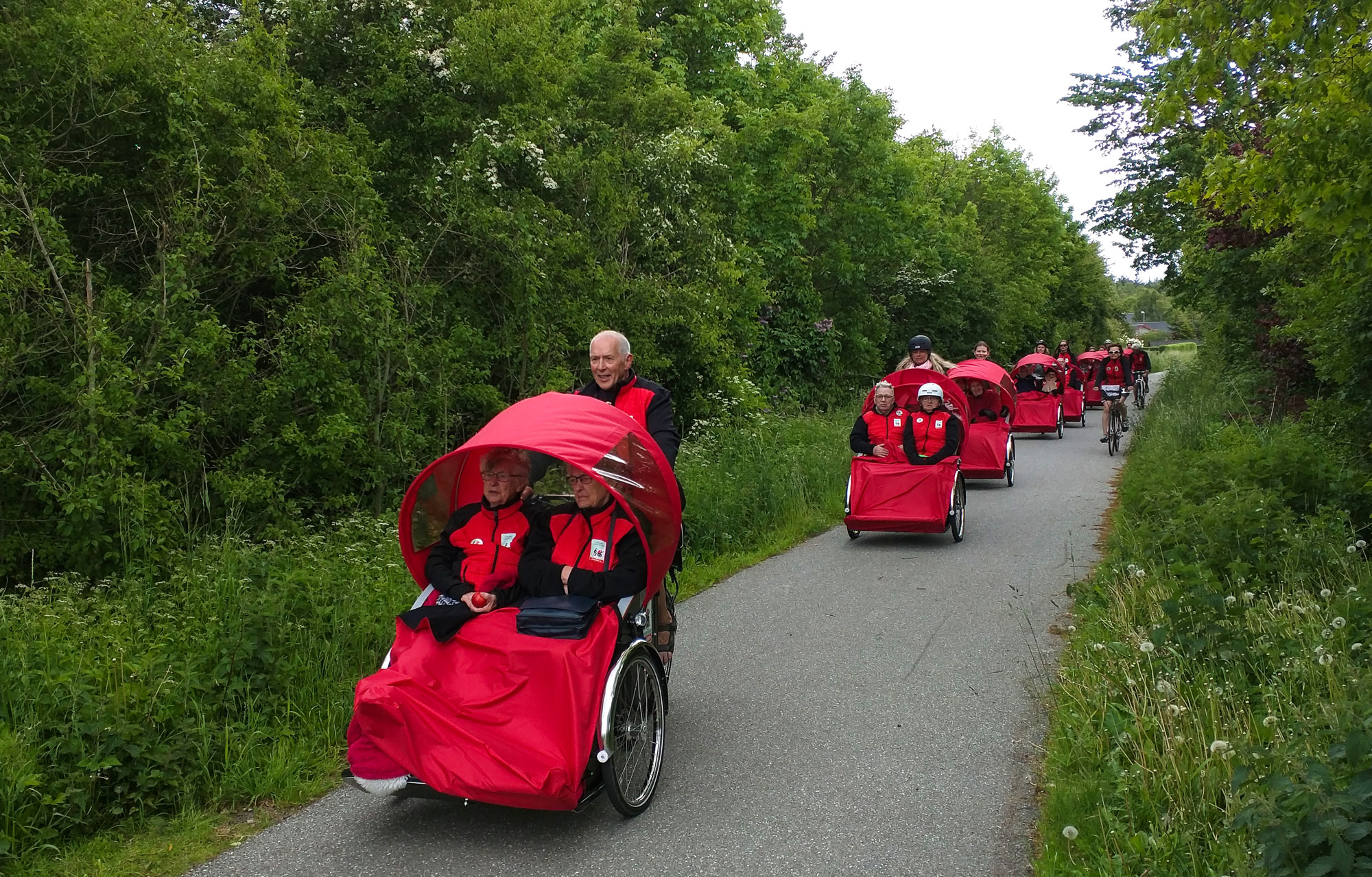
Bicycles made for three, or, how to allow older people to enjoy the outdoors. Seniors are often faced with feelings of isolation and “the absence of friends or family to go out with,” wrote researchers from the University of Bath in a study of health interventions for seniors in the United Kingdom. Just taking daily trips out of the house — especially trips that are not by car — is associated with better health for older adults. Researcher Anne Tortzen studied the effects of Cycling Without Age in Denmark and noted that one senior who attended a long-haul ride went from spending 90 percent of his time in bed to “[getting] out of bed every day, motivated simply by the rickshaw rides offered on a daily basis at the care facility.”
The benefits aren’t just for the seniors; the pilots learn a ton, too. “I’ve seen places I did not know, and I’ve learned about the history of the area,” says Ditte Jakobsen, the head of the Cycling Without Age chapter in Capbreton, France. Jakobsen, a Denmark transplant, was excited to bring her country’s cycling culture to France and to explore her new home. One passenger gave Jakobsen a guided tour of the local forest, while another shared stories from wartime life inside bunkers on the coastline.
But her favorite ride to date was when she brought 103-year-old Juliette to see the sea. When the weather turned unexpectedly cold, they nearly turned around, but then Jakobsen remembered a nearby thrift store. The staff gave Juliette a scarf and sweater for free. When the bundled-up pair set out again and reached the shore, Juliette confided that she had never once been to a thrift store. Jakobsen says, “The two of us laughed so much. Imagine at 103 years old, to still discover new things, like going to the thrift store for the first time. It is fantastic.”
Cycling’s universal promise: you too have “the right to wind in your hair,” as the group’s mission statement puts it. As the organization continues to expand around the world, in Copenhagen — the site of the pilot chapter — the rides have been growing in length. Members embarked on a 250-mile trip from Rønde, Denmark to Arendal, Norway, with 17 passengers and 20 pilots in June 2016 (it became the subject of a documentary The Grey Escape). For five days and four nights, passengers ate together, rode together and sang together. They concluded their trip with a gift: delivering 10 trishaws to the city of Arendal. So far, the Copenhagen group has taken more than 20 long-haul trips.
“We’ve found that long rides have some really significant positive effects on both the elderly residents, the pilots and the nursing home staff,” Kassow says. “We organize reunions two or three months afterwards, and the people who have dementia will remember the trip and talk about it. They light up, they smile, and they sing along to songs we played on the ride.”
Kassow is delighted and excited about the global spread of his program. “I think Cycling Without Age appeals to so many different cultures because it ticks off several boxes important to people, irrespective of country and culture,” he says. “It appeals to fundamental human kindness; it promotes community and relationships across generations; and it involves cycling, which is gaining in popularity around the world.”
In November 2016, Kassow pedaled 81-year-old Jens Peter Jensen and Jensen’s friend Alice up the steep inner path of Copenhagen’s Round Tower. The trip was organized after Kassow heard it was the man’s dream to reach the top of the city landmark. Partway through the ride — Kassow heard Alice, who’d very reluctantly agreed to go on the ride, lean over and say to Jensen “Det var godt vi sagde ja” (in English, “It was good that we said yes”). To Kassow, that remark — and trip — illustrate the power of the program, of its ability to fulfill dreams and to bring people outdoors and out of their comfort zones, no matter their age.








